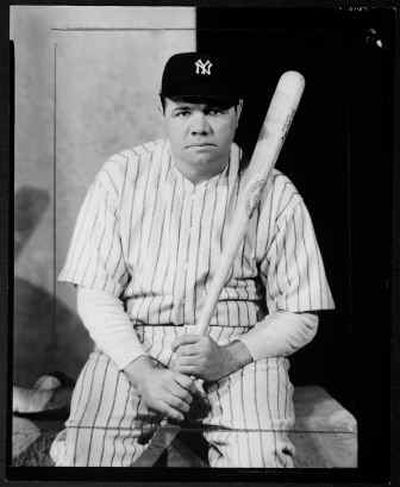Photo museum hits road

Americans living far from big cities will get a close-up view of 300 classic photographs that reflect the nation’s soul: Ansel Adams landscapes, battle scenes from Gettysburg to Omaha Beach, engaging portraits of Abraham Lincoln, Judy Garland, Babe Ruth.
Many are widely familiar: Dorothea Lange’s migrant mother during the Depression, Edward Weston’s seductive pepper, the first lunar orbiter’s image of Earth.
Others, if less iconic, evince the power of nature, the misery of war, the tug of family, the glow of Hollywood.
The treasured pictures usually are secreted along with 400,000 others in climate-controlled vaults at George Eastman House in Rochester, N.Y., the world’s oldest photography museum.
But next spring, they will be gathered up for a two-year tour of the nation’s hinterland.
“Seeing Ourselves: Masterpieces of American Photography” will nestle for months at a time in a half-dozen small towns and midsize cities.
The exhibition is part of a visual arts project supported by the National Endowment for the Arts to send the best of American culture from 11 museums and galleries to places with limited exposure to world-class collections.
The Eastman House is throwing darts at each vast corner of the country – Florida is one probable destination – as well as some place in the heartland. But it will be a few months before the communities are chosen.
Minimum requirements: air conditioning and security.
“It couldn’t just go into a school lobby,” said Alison Nordstrom, the museum’s curator of photographs. “It would have to be in a place where there are people whose job is to keep an eye on things.”
The impulse, nonetheless, is to make an accessible art form accessible to the people – outside the metropolitan cultural centers.
“We are a collections-rich institution and we understand ourselves as the national museum of photography,” Nordstrom said. “It’s important that we make some new friends.”
Unlike a traveling theater or art show, photographs seem much more likely to capture the popular imagination.
“There’s a reverence for art museums but there’s also a certain level of discomfort – ‘What if I don’t know enough?’ ” Nordstrom said. “But everybody feels they know enough to appreciate photographs.”
To see the photographs all together, “to see the real thing” in place of reproductions in a book, she said, could be life-changing for some.
Although the technology has changed entirely since photography’s birth in 1826, “the quality of some of the early works is just truly outstanding, even by today’s standards,” said Popular Photography magazine’s editor in chief, John Owens, who toured Eastman House last year.
“To see some of these pictures, it’s like you’re there,” Owens said. “In some cases, you feel what the photographer must have felt, especially some of the prints from the Civil War period.”
An introductory exhibit will contain acknowledged masterpieces covering a spectrum of subjects, format and history: the flag-raising at Iwo Jima, Martin Luther King Jr. on the United Nations steps, “Moonrise, Hernandez” and other black-and-white expanses of nature by Adams.
One of five categories will be devoted to famous people: an aging Ruth in the dugout, a young Garland in a necklace and gown, a gawky soon-to-be President Lincoln in 1860.
Another will depict war: Timothy O’Sullivan’s “A Harvest of Death” at Gettysburg, Robert Capa’s D-Day scene of soldiers swimming toward Omaha Beach, Huynh Cong “Nick” Ut’s shot of a blistered and screaming 9-year-old girl running from a napalm attack in Vietnam.
Housed since 1949 in the Colonial Revival mansion of Kodak founder George Eastman, the museum will organize a variety of educational activities for schools and families and offer staff experts for a lecture series on photography in each of the host towns.